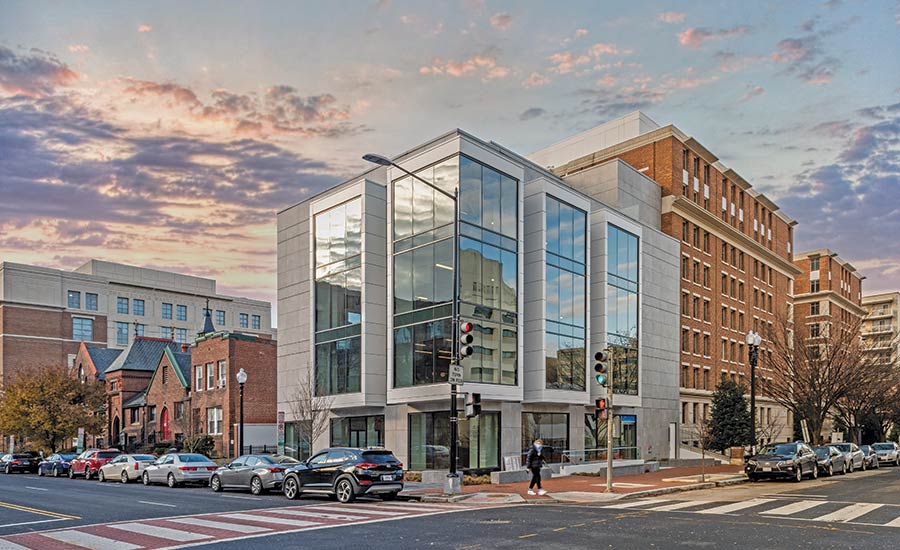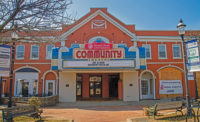Hillel International - Hillel at The George Washington University, Gewirz Center
Washington, D.C.
Award of Merit
KEY PLAYERS
OWNER: The George Washington University
LEAD DESIGN FIRM: Powers Brown Architecture
GENERAL CONTRACTOR: Consigli Construction Co.
CIVIL ENGINEER: Wiles Mensch Corp.
STRUCTURAL ENGINEER: Smislova, Kehnemui & Associates PA
MEP ENGINEER: Greenman-Pedersen Inc.
OWNER’S REP: Prospera-USA
SUBCONTRACTORS: Atlas Foundations of Washington LLC (Structural, Foundation and Shoring); The Berg Corp. (Demolition); CB Flooring (Flooring and Tile); Chevy Chase Contractors Inc. (Site Construction/Concrete); Dynamic Contracting Inc. (Field Operations Coordination/Tracking); Hardesty Concrete Construction Inc. (Concrete for Base Building)
The five-story, 19,598-sq-ft facility is a spiritual home where all students can gather. To make way for the new structure, demolition of the existing Hillel building began by hand because there was little room on site for equipment. Debris soon filled the existing basement level, forming a work surface for heavier demolition equipment. The proximity of a residence hall required existing foundation walls to be supported with underpinning until the new structure was built. Regular electronic scans of the residence hall and an adjacent historic church ensured that construction work caused no damage. The team also implemented 24/7 vibration monitoring and weekly surveyor reports to check for settlement and subsidence.
Despite efforts to synchronize construction activity, some tasks required innovative scheduling. When a generator was ready to be hoisted to the roof, the crane had already been removed and a traffic lane closure was not allowed. Ultimately, a 200-ton crane for hoisting the generator was allowed to be placed on soil where a sidewalk would be added. Another challenge was the late arrival of donor-provided lighting fixtures, which required a rapid redesign of lighting system controls and sensors. The project team also monitored the global spread of COVID-19 because the sole source for the building’s distinctive rain screen was a production facility in Spain. Daily coordination and confirmation calls ensured that the product was manufactured and shipped on time.





Post a comment to this article
Report Abusive Comment